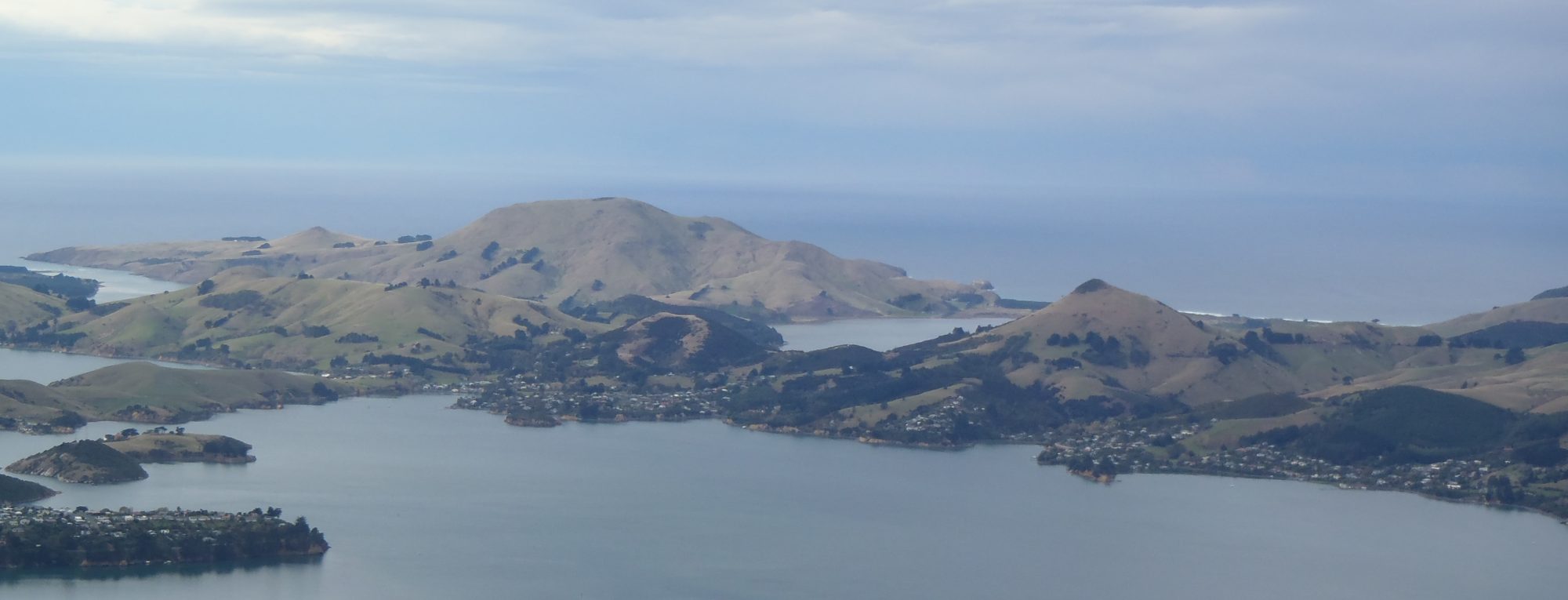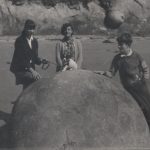My sister April and I were travelling the West Coast, and I was in charge of adventure. I had snapped a snippet of one of our grandma’s old photo albums, and suggested we try to recreate the image.
April was on board with my idea, so after a night at the Rainforest Retreat we decided to give it a go. The picture in question? A magnificent Fox Glacier circa 1952, taken from a mysterious location described in her caption only as “the staircase”. Grandma sadly is no longer around to enlighten us, so we had to use our best detective skills.

We breakfasted by the fire at Full of Beans, then headed straight for the the Franz Josef i-Site. Considering we barged in first thing on a Monday morning and announced “We’ve got a tricky one for you!” the staff were surprisingly enthusiastic when it came to identifying the location of the picture.
As a group we examined the glacier webcams, time lapses and historic photographs. We concluded that the most likely location of our antecedent photographer was from a track known as “the Chalet Lookout Track”, which unfortunately no longer exists. It was possible, our friends thought, that some staircases had once existed on this route.
Even though our intended viewpoint might no longer be there, we decided to do our best to visit the glacier anyway, hoping to get a feel for how the place had changed after so many years.
Our interest wasn’t entirely ancestral. We had been here together before, back in 1995 when I was about nine years old and April four. I had vague memories of a thick grey Fox River, laden with the fine rock dust scraped from valley walls by the slow movement of the glacier, surging from its cave in the enormous jagged wall of ice that marked its terminus.
April only had vague memories involving snow and having to wear mittens on her feet after misinterpreting an instruction to wear gumboots to mean that she shouldn’t wear socks.
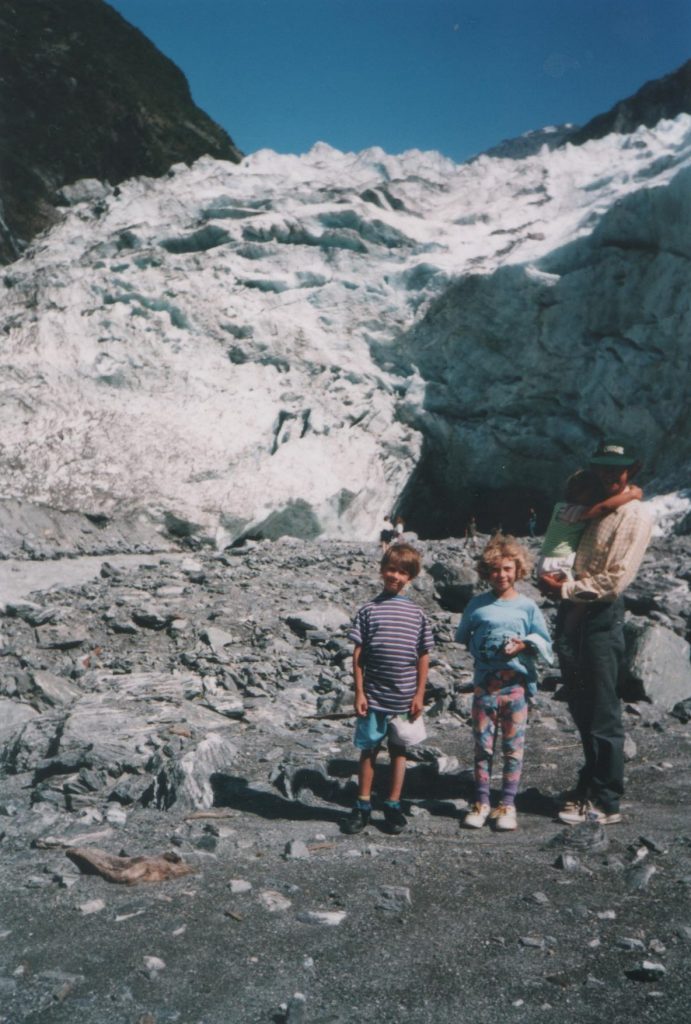
Furthermore, Dad and I had been back some time around 2008, and what I remember most is us both being annoyed at the distance the barrier kept us back from the glacier, which seemed outrageous compared to the freedom of access 15 years earlier. In fact, I remember thinking after hearing of the 2009 deaths of two tourists under collapsing Fox Glacier ice that if only the barrier had been at a more sensible distance then maybe people wouldn’t be so inclined to cross it (DOC’s own numbers estimated one third of visitors were crossing the barrier).
It never occurred to me at the time that the barrier might have been reasonable if not for the glacier’s alarming rate of retreat.

Back in the present, April and I headed south past the small township and crossed the Fox River, finding our quickly way to the car park. From this spot the Fox River did not appear to be the grey torrent I remembered, but we had some way to go to reach its origin.

We entered the rainforest, following a wide well graded track up the valley parallel to the river. Next to the trail we found a small pool signposted as a “warm spring”. We both tested the water in disbelief and found the claim to be true.
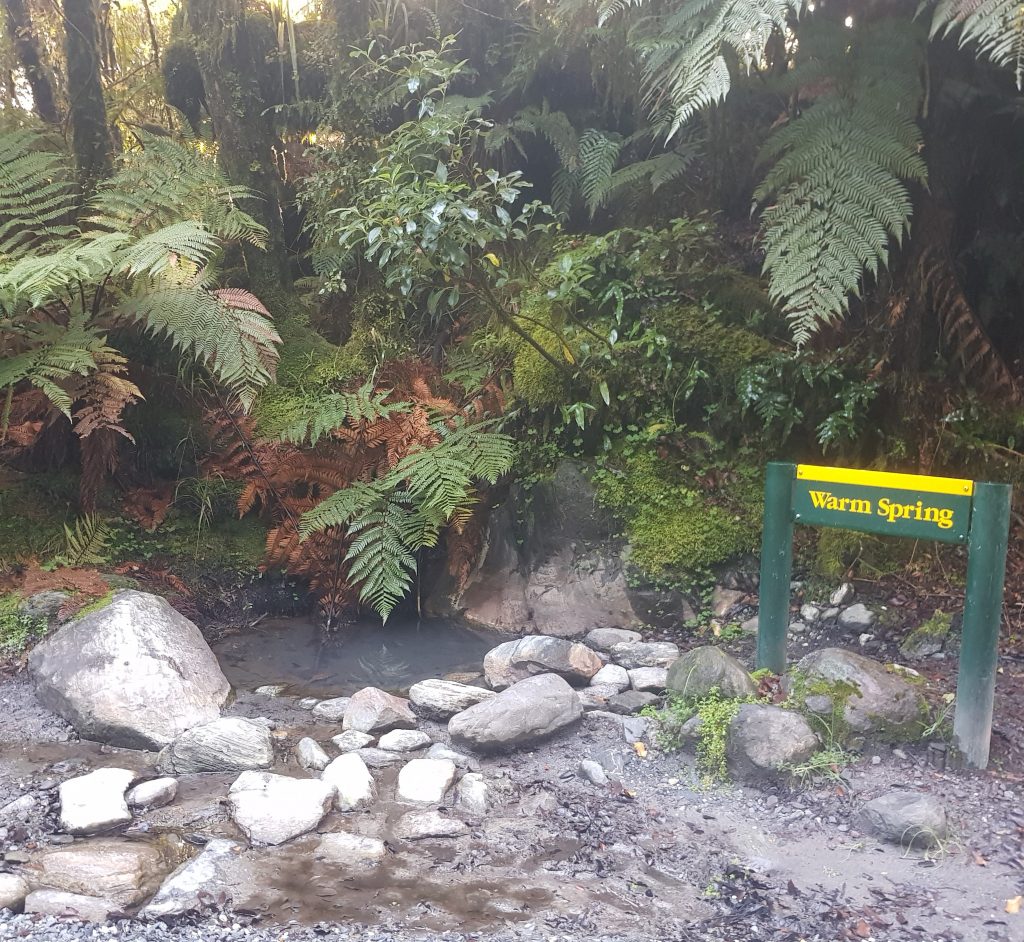
Finally, through a break in the trees, we caught our first glimpse of the great glacier that had drawn us to this valley.
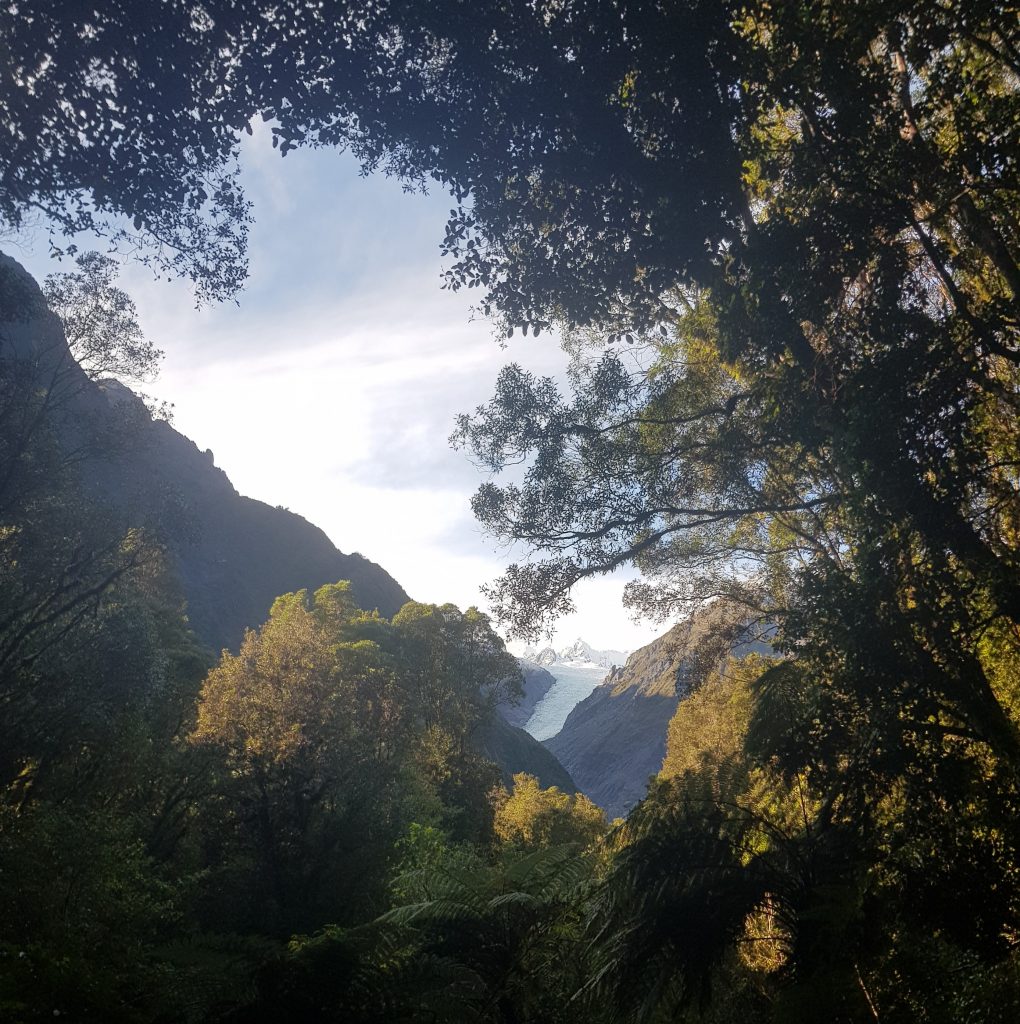
We pushed on, eventually finding ourselves in a deserted car park, cut off from vehicle access since February last year when the country’s largest active slip, the Alpine Gardens Landslide, destroyed the old access road. The Department of Conservation had no choice but to admit defeat against this force of nature, for even if the road were repaired (at great expense) nothing could stop the inexorable slip from destroying it once more. As of February this year said slip was moving at over 11cm per day!
This sort of instability in the landscape is unfortunately to be expected as the glacier retreats. Just as the shrinking Tasman Glacier may have unpredictable effects on downstream hydro schemes, the Fox Glacier has until now played a huge part in keeping the surrounding hill slopes stable. The valley floor rose two metres in the two years leading up to 2015, and scientists expect this place to look completely different in a hundred years time.
Meanwhile, another sign urged us onward, this time along a narrower trail. Finally we emerged at the viewing site and, gazing up the valley, this was what we saw:

I think a little piece of my identity, a little piece of my heart may have melted away as I saw what had become of my childhood memory, my parents’ family excursion, my grandma’s adventure.
No longer can we view the mighty Fox as grandma once did. Nor can we approach the great terminus as in my memory. We cannot even view the glacier from the disappointing distance Dad and I did twelve years ago.
When it came to the Moeraki Boulders – another site that my family has visited for generations – I imagined that our descendants would one day follow us, that our family’s visitations to that place would connect us both to our forebears and those who were yet to come.
But the truth now seems inescapable that my generation will be the last to look upon this glacier. The link has been broken and our descendants will pass by this unremarkable empty valley and never know what it once was to be awed by that great wall of ice.
References:
Ice collapse witnesses speak to police Fox Glacier road to remain closed indefinitely by Kim Moodie
Monster New Zealand landslide lost 90,000 shipping containers worth of material in a year by
Michael Daly
Dramatic photos: Fox Glacier’s retreat causes valley to rise by a metre by Jamie Morton
